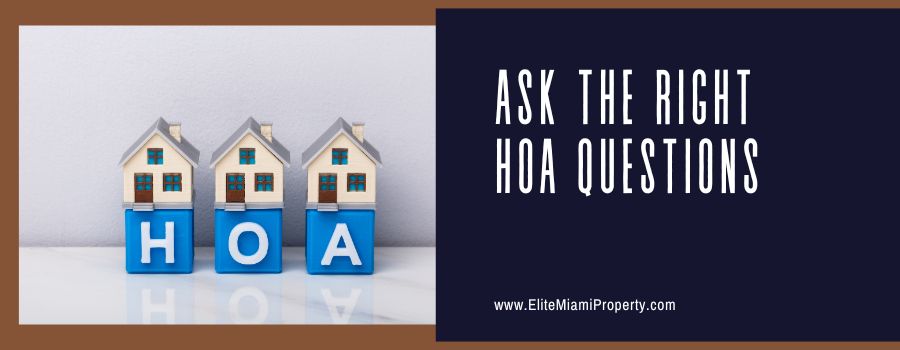Condo HOA: What Every New Home Owner Should Know
Condo HOA: What Every New Home Owner Should Know
Blog Article
Just How Condominium HOA Controls Shared Rooms and Improves Community Consistency
The administration of shared areas within a condominium organization plays a critical duty in promoting area cohesion and keeping residential property values. With the establishment of detailed standards, the Condominium HOA not just regulates the usage of communal features yet also advertises a society of respect and liability among citizens.
Duty of the HOA
The property owners organization (HOA) functions as the regulating body for condo communities, playing a vital duty in preserving the building and promoting a cohesive living atmosphere. It is liable for imposing and passing area rules and guidelines, which are made to preserve the aesthetic value and capability of the common room. This administration ensures that all locals stick to a standard collection of assumptions, cultivating a feeling of unity amongst diverse homeowners.
Furthermore, the HOA handles the monetary aspects of the area, consisting of budgeting, accumulating dues, and maintaining common areas. This financial oversight is crucial in making sure that essential upkeep and improvements are performed without delay, enhancing property values over time. The HOA additionally acts as an intermediary in between citizens and outside entities, such as city government and service providers, addressing communal problems properly.
Additionally, the HOA commonly arranges area events and programs, motivating neighborly communications and constructing partnerships amongst homeowners. By promoting open interaction and dealing with grievances, the HOA adds to a harmonious living environment. Hence, its diverse duty is vital in making certain the smooth procedure and general complete satisfaction within condominium areas.
Guidelines for Shared Spaces
Efficient governance in condo neighborhoods requires clear rules for common spaces, which are essential for preserving order and promoting a feeling of community amongst residents. These regulations function as standards that guarantee everyone can appreciate common locations, such as pools, yards, and recreational centers, without conflict.

Moreover, cleanliness and maintenance requirements are important, frequently specifying that locals must tidy up after themselves and report any kind of damages to the home owners' association. By plainly interacting these assumptions, the HOA can reduce misconceptions and urge respect amongst homeowners.
Ultimately, distinct regulations for shared areas add to the overall lifestyle in a condo area, allowing locals to exist side-by-side in harmony while delighting in the services that enhance their living experience. condo hoa.
Significance of Neighborhood Guidelines

Area standards play a substantial duty in cultivating a natural and considerate atmosphere within condominium associations. These guidelines establish clear expectations for citizens, advertising a sense of responsibility and shared obligation. By marking appropriate this post behaviors and practices, area standards assist avoid misunderstandings and conflicts amongst homeowners.
In addition, these standards work as a framework for keeping the visual and functional honesty of common areas. They guarantee that all residents stick to requirements concerning residential property maintenance, noise degrees, and usage of communal centers. This uniformity not just improves the visual allure of the neighborhood but additionally adds to overall property values, benefiting all homeowners.

Problem Resolution Methods
Navigating problems within a condominium association calls for a structured strategy to make sure fair and reliable resolution. Reliable conflict resolution approaches usually begin with open interaction, motivating residents to voice worries in a respectful fashion. Establishing an assigned network for grievances, such as a suggestion box or an online discussion forum, can facilitate this procedure.
Mediation is one more important technique, in which a you can try this out neutral 3rd party aids contesting homeowners reach an equally agreeable option. This approach fosters cooperation and understanding, minimizing hostility - condo hoa. The HOA board must additionally create clear procedures for resolving complaints, guaranteeing all events recognize the steps entailed
Normal conflict resolution training for board members can improve their capability to manage disagreements properly. Utilizing a well-defined framework, original site such as the "Interest-Based Relational Method," assists focus discussions on passions rather than positions, promoting a solutions-oriented state of mind.
Benefits of Community Harmony
Promoting community harmony within a condominium association brings various advantages that enhance the overall living experience for residents. An unified area urges cooperation and cooperation amongst next-door neighbors, bring about an extra congenial atmosphere. When citizens really feel linked and revered, they are most likely to participate in communal activities and join decision-making procedures, leading to a stronger feeling of belonging.
Additionally, community harmony dramatically minimizes misconceptions and disputes, which can otherwise interfere with day-to-day life. A serene environment decreases anxiety and promotes psychological wellness, allowing homeowners to appreciate their homes fully. In addition, unified relationships usually equate into raised property worths, as prospective purchasers are drawn to neighborhoods characterized by security and collaboration.

Final Thought
With the facility of clear regulations and community guidelines, citizens are motivated to preserve a answerable and respectful environment. Eventually, the initiatives of the HOA add to a natural area, promoting both residential or commercial property worths and general resident contentment.
Moreover, the HOA typically arranges neighborhood events and programs, encouraging neighborly interactions and building relationships among locals. By defining acceptable habits and methods, neighborhood guidelines assist avoid misunderstandings and disputes among locals.
Furthermore, neighborhood guidelines help with effective communication amongst homeowners and the Homeowners Organization (HOA) Through the establishment of clear rules and area standards, citizens are motivated to preserve a accountable and considerate atmosphere. Eventually, the efforts of the HOA add to a natural neighborhood, promoting both property worths and general resident fulfillment.
Report this page